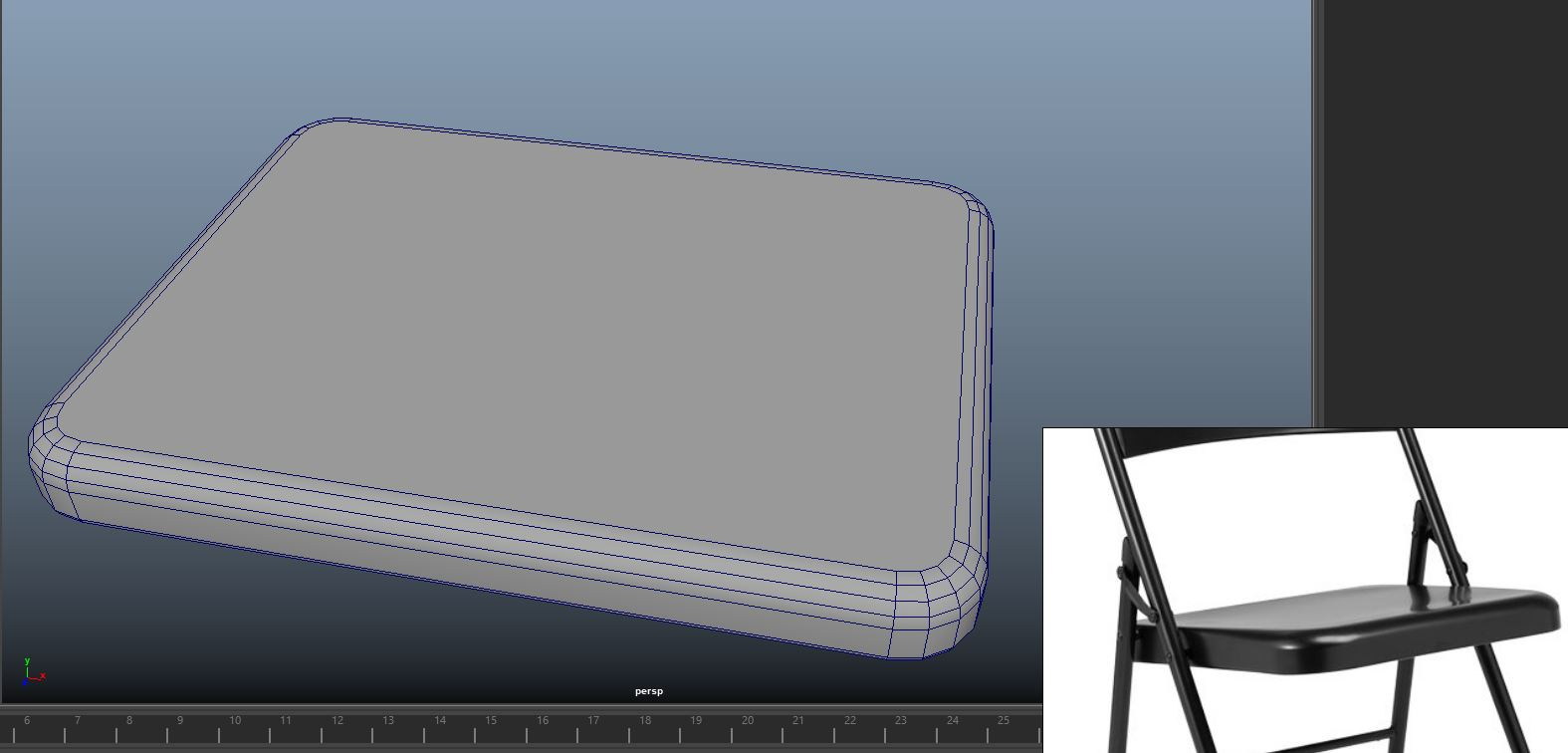The BRAWL² Tournament Challenge has been announced!
It starts May 12, and ends Oct 17. Let's see what you got!
https://polycount.com/discussion/237047/the-brawl²-tournament
It starts May 12, and ends Oct 17. Let's see what you got!
https://polycount.com/discussion/237047/the-brawl²-tournament
Make Quads out of a Ngon flat face on a static game mesh, yes or no ? ( No Subd, no bake )
I tend to have all quads where possible on my meshes especially if i know that i will subdivide them but i was wondering in the case of a real time asset like this:

As you can clearly see i have a flat face with ngons. This is already the final mesh, i won't do any bake or smoothing ( subd ) and i know that the engine will triangulate the face anyway.
So the question is: Should i quad out the face even if i'm not going to do any smoothing or baking or can i leave it as it is and just triangulate on export ?
If the ngon was on a curved face i would probably quad it out to prevent shading issues but with a flat face i don't know if it's going to make a difference.

As you can clearly see i have a flat face with ngons. This is already the final mesh, i won't do any bake or smoothing ( subd ) and i know that the engine will triangulate the face anyway.
So the question is: Should i quad out the face even if i'm not going to do any smoothing or baking or can i leave it as it is and just triangulate on export ?
If the ngon was on a curved face i would probably quad it out to prevent shading issues but with a flat face i don't know if it's going to make a difference.
Replies
Best to cut up those long quads while you're in there adding those edges to the top.
Yes it'll add vertices, but they aren't the bottleneck.
Sadly, the knowledge and understanding of triangle topology is a dying artform.
Back in the old days polygons were sorted using their centers. Not using a per pixel depth buffer. So you would get something called z-fighting where polygons would 'pop' and draw in front of polygons they used to be behind. You can see this if you find an old virtua fighter arcade game. So you had to build models that had even sized triangles (and not many of them). It's still a good idea to do this.
http://wiki.polycount.com/wiki/Polygon_Count
We use quads when modeling because the tools are easier with quads. But in the end, it's still just triangles.
So, it's best to triangulate before export, make sure it's the topology you want.
In the past (and currently on low-end devices) you had very few triangles to work with, so careful topology was (is!) important.
Z-fighting is still an issue. I just ran into it today, with pre-baked shadow-planes under meshes... if those are at the same height as the floor mesh, you get z-fighting. You have to raise the shadow planes slightly above the floor to prevent this. It's not about triangle size.
What you describe is wasteful but inevitable so not an issue in itself, what you're missing is that any other triangle covered by those quads causes the quads to be processed again.
Long thin triangles mean more chance of a quad covering many triangles.
Thanks for all the feedbacks.